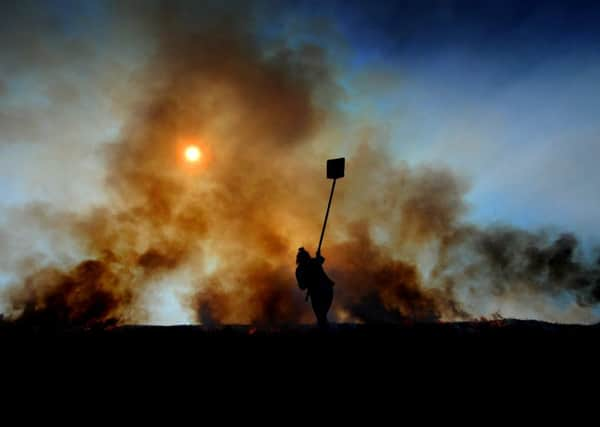Beating a path to tranquillity and biodiversity


The process of heather burning is thought to have a beneficial effect on the moor in that it removes old heather and promotes new growth, even attracting birds to nest.
Fires are started deliberately by landowners and this process often leaves affected hillsides with visible scars.
Advertisement
Hide AdAdvertisement
Hide AdBut to keep the heather moor in a good state of health, it is deliberately burned in a controlled fashion and the fire is restricted with beaters.
Historically, this was done to encourage grouse to breed, ostensibly so they could be shot, but it is now widely recognised that the process helps preserve the heather landscape, which would otherwise be succeeded by larger plants and ultimately trees. It also helps biodiversity.
Snilesworth Moor is a glorious haven, beloved by walkers for its endless heather horizons.
This secluded wilderness has to be one of the most enjoyable places in the North York Moors National Park, boasting easy-to-find paths and tracks, outstanding scenery and a sense of solitude and seclusion which leaves one feeling comforted and nourished.
Advertisement
Hide AdAdvertisement
Hide AdDuring the 18th century, lime was used by farmers from the to combat acid in the soil, mainly after they had burned off the heather to reclaim land from the moors, turning it into pasture.
So much lime was used, in fact, that kilns were built on site, thus saving the expense of carting it in.
Osmotherley, meanwhile, is the archetypal North York Moors village, nestling snugly into patchwork landscape of woodland, moors and upland fields.
The village was developed in the 1800s as an overnight stop on the north-south drove road. Today it is popular with walkers, and this location is responsible for its present popularity as a walking and outdoor centre; it’s the start (or finish) of the famous Lykewake Walk and is also on the Coast-to-Coast walk.
Technical Data: Nikon D3s Camera, 12-24mm lens, exposure 500th f5.6, iso 200)
Picture: Simon Hulme
Words: Neil Hudson